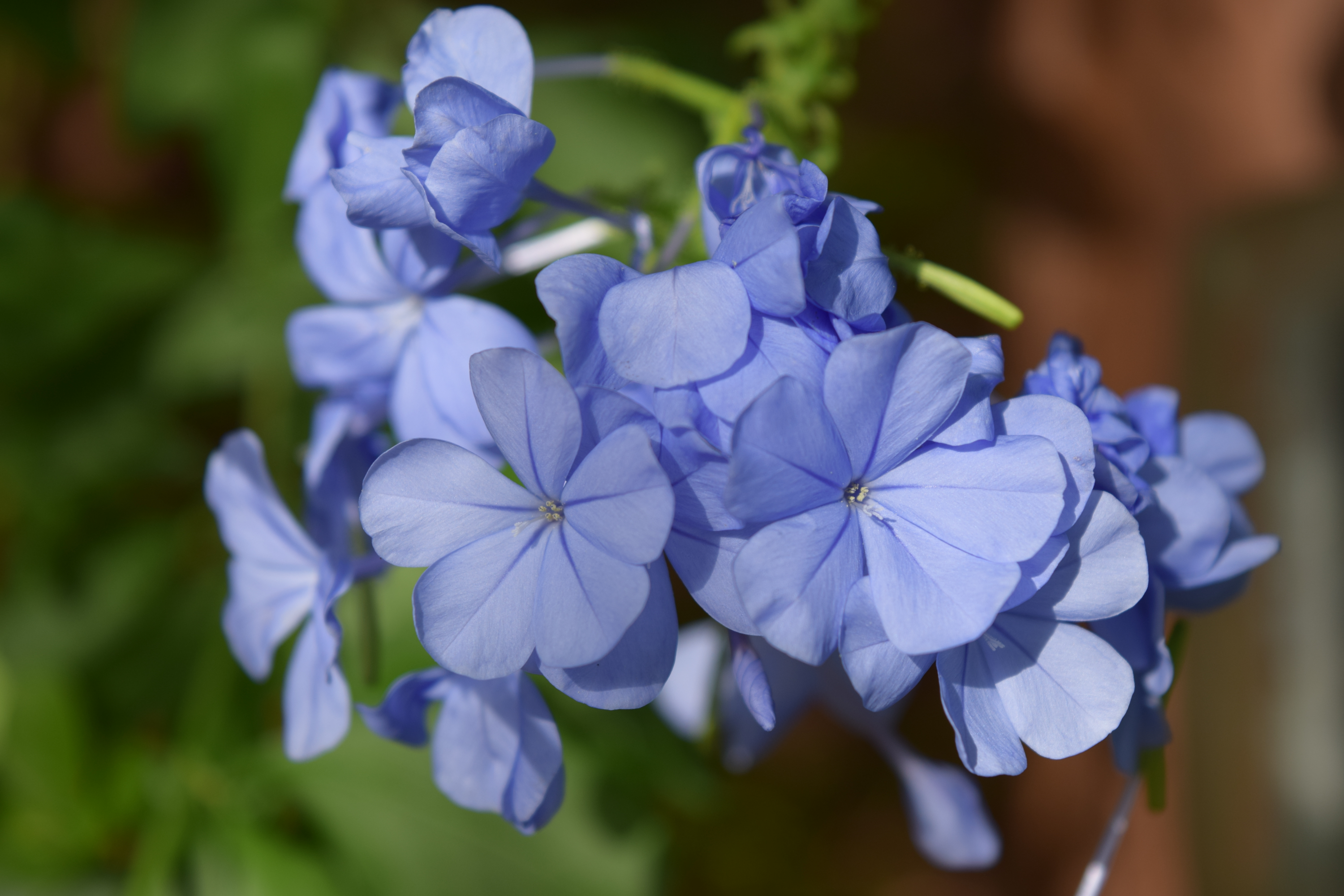Cape leadwort
(Plumbago auriculata)

Description
Plumbago auriculata is a perennial flowering plant belonging to the family Plumbaginaceae. The species is native to South Africa, but it is widely grown as an ornamental plant in other parts of the world, including Australia, the United States, and Southeast Asia. In this article, we will provide an in-depth look at the Plumbago auriculata, including its taxonomy, morphology, cultivation, propagation, and uses. Taxonomy: The Plumbago auriculata belongs to the genus Plumbago, which consists of approximately 20 species of flowering plants. The name "Plumbago" comes from the Latin word "plumbum," which means lead, and refers to the supposed lead-like color of the plant's flowers. The species name "auriculata" means "with ears" and refers to the leaf shape, which is ear-like. Morphology: The Plumbago auriculata is a shrub that can grow up to 3 meters in height. It has green, glossy leaves that are lanceolate to ovate in shape and measure between 5-10 cm in length. The plant produces a profusion of blue or white flowers that are arranged in clusters at the end of the stems. The flowers have a funnel-shaped corolla and measure approximately 2.5 cm in diameter. They bloom from summer to autumn and attract bees and butterflies to the garden. Cultivation: The Plumbago auriculata is a hardy plant that is easy to grow and care for. It prefers a well-draining soil that is rich in organic matter and is slightly acidic. The plant can tolerate a wide range of temperatures but prefers a warm, sunny location. It is resistant to drought and can tolerate short periods of dryness but performs best when watered regularly. The plant can be propagated from cuttings or seeds. Propagation: The Plumbago auriculata can be propagated from stem cuttings taken in spring or summer. Select a healthy stem that is approximately 10 cm long and remove the lower leaves. Dip the cut end of the stem in rooting hormone and plant it in a well-draining soil mix. Keep the cutting moist and warm until roots have formed, and the plant has started to grow. The plant can also be propagated from seed, which should be sown in spring or summer in a well-draining soil mix. Uses: The Plumbago auriculata is primarily grown as an ornamental plant. Its attractive blue or white flowers and glossy green leaves make it an excellent choice for adding color and texture to the garden. It can be grown as a hedge, a specimen plant, or trained to climb a trellis or fence. The plant is also used in traditional medicine to treat a variety of ailments, including respiratory infections, headaches, and fever. The leaves and roots of the plant contain compounds that have antibacterial, anti-inflammatory, and antioxidant properties. Conclusion: In conclusion, the Plumbago auriculata is a beautiful and easy-to-grow plant that is widely used as an ornamental plant in gardens around the world. Its attractive flowers and glossy green leaves make it an excellent choice for adding color and texture to the garden, and it is also used in traditional medicine for its medicinal properties. Whether you are an experienced gardener or a novice, the Plumbago auriculata is an excellent plant to add to your collection.
Taxonomic tree:







